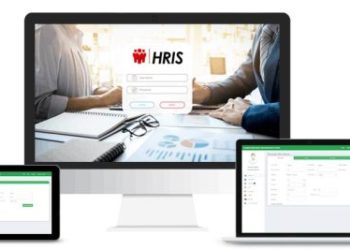Introduction
As the digital landscape is growing more competitive, organizations strive to release software faster and more reliably. To achieve this, most organizations are turning to DevOps, a revolutionary methodology that helps bridge the gap between developer and operations teams.
However, implementing DevOps isn’t possible just with some tools; it requires a solid strategy built on proven best practices. Read more in this article to explore essential DevOps implementation best practices that help teams enhance efficiency, streamline processes, and achieve continuous growth.
6 Key DevOps Implementation Best Practices to Follow
Here are the six main DevOps Implementation best practices organizations and developers should follow to implement DevOps successfully throughout their software lifecycles.
1. Develop a DevOps Mindset
Creating a DevOps culture starts with bringing people together. It’s about breaking down barriers between teams and building trust through shared goals and responsibilities. Here’s how to foster a DevOps mindset:
Promote Clear Communication: Arrange frequent meetings and feedback sessions for development and operations teams to understand each other better.
Form Interdisciplinary Teams: Encourage employees from various teams with different skills to work together and aim for shared objectives.
Support Ongoing Learning: Offer training and development programs to help employees enhance their understanding of DevOps tools and methods.
Building a strong DevOps culture boosts morale and establishes a flexible, efficient, and successful workflow for DevOps implementation.
2. Automate Everything Possible
Automation is a vital part of DevOps, which helps accelerate workflows, minimize errors, and ensure consistency across the software lifecycle. Automating repetitive, time-consuming activities lets developers focus on more critical tasks. Key areas to automate include:
- CI/CD Pipelines: Streamline code integration and deployment processes for faster, more reliable releases.
- Testing and Quality Assurance: Automate testing at every stage to detect and fix bugs early, ensuring high-quality output.
- Infrastructure Provisioning: Use tools like Terraform or Ansible to automate infrastructure setup and reduce maintenance time.
With automation, teams can respond to changes faster while maintaining product quality.
3. Implement Continuous Integration and Continuous Deployment (CI/CD)
CI/CD pipelines are integral to DevOps, allowing teams to integrate code changes regularly and deploy them securely. CI/CD helps teams cover bugs early, reduce unnecessary work, and simplify deployment. Key practices for effective CI/CD implementation include:
- Frequent Code Integration: Encourage developers to integrate code multiple times daily to identify and fix errors quickly.
- Automated Testing: Automate testing at every stage to ensure quality and detect bugs early in your code.
- Rollback Mechanisms: Add rollback options to the pipeline to quickly reverse changes and tackle immediate issues that may arise during deployment.
With CI/CD, teams can release software faster and more reliably, responding quickly to market needs.
4. Continuously Monitor and Optimize Performance
Monitoring your systems and data is crucial to catch issues early and maintain optimal system performance. Here’s how to implement effective monitoring:
- Set Up Comprehensive Monitoring: Use monitoring tools to track key metrics like CPU usage, memory, and error rates, with alerts for anomalies.
- Implement Logging and Analytics: Collect logs to understand system behavior better, making troubleshooting quicker and more efficient.
- Regularly Review Metrics: Analyze monitoring data to spot trends and make data-driven decisions for optimizing infrastructure and applications.
DevOps teams can continuously monitor and optimize performance, ensure reliable system performance, and provide a better user experience, leading to customer satisfaction.
5. Prioritize Security in Every Phase
Incorporating security into every development lifecycle phase, also known as DevSecOps, helps teams spot and address vulnerabilities before they affect production. This proactive approach reduces the risk of additional expenses on fixes after deployments and makes your applications more secure than ever. Key security practices include:
- Automated Security Scans: Use tools that automatically detect vulnerabilities in the deployments by scanning the underlying code. This helps catch security issues early, minimizing the risk of negative impact later.
- Access Control and Permissions: Implement role-based access control (RBAC) to restrict unauthorized users from accessing sensitive data and systems, thereby reducing the risks of potential breaches.
- Regular Audits and Compliance Checks: To maintain data security and integrity, perform timely security audits, and ensure compliance with industry standards.
A security-first mindset safeguards sensitive data, builds user trust, and ensures the overall integrity of the development process.
[Read more about DevSecOps here: What is DevSecOps?]
6. Start Small and Scale Gradually
A common mistake when adopting DevOps is trying to implement all practices at once, which can overwhelm teams and slow progress. Instead, it’s better to begin with a small, easy-to-manage scope and expand as you gain experience. Here’s how to take a phased approach:
- Begin with a Pilot Project: Apply DevOps practices to a small, low-risk project. This gives teams hands-on experience and helps identify challenges early.
- Set Measurable Goals: Define objectives for each phase, allowing teams to monitor progress and make improvements as needed.
- Scale Based on Success: Once the pilot is successful, expand DevOps practices to other projects and teams, incorporating lessons learned.
Starting small helps teams adjust to DevOps, ensuring a more effective and manageable implementation.
Conclusion
Implementing DevOps is a journey that demands planning and dedicated adherence to established norms for success in the software development process. By nurturing a DevOps mindset, streamlining procedures through automation, establishing CI/CD pipelines, prioritizing security, and scaling gradually, teams can transform their software delivery and enhance operational efficiency. For organizations seeking a competitive advantage, these DevOps implementation best practices provide a pathway toward achieving more flexible, responsive, and robust development processes.
That said, implementing DevOps isn’t always easy, and challenges remain. For organizations ready to implement these best practices effectively, leveraging DevOps implementation services can help navigate potential hurdles and ensure a smoother transition. These expert services can provide guidance and support to avoid common pitfalls, making the DevOps journey more seamless and successful. By addressing challenges head-on and working with professionals, teams can foster a culture of continuous improvement, drive innovation, and achieve long-term success.
Author Bio:
Chandresh Patel is a CEO, Agile coach, and founder of Bacancy Technology. His truly entrepreneurial spirit, skillful expertise, and extensive knowledge of Agile software development services have helped the organization achieve new heights of success. Chandresh is leading the organization into global markets systematically, innovatively, and collaboratively to fulfill custom software development needs and provide optimum quality.














































































